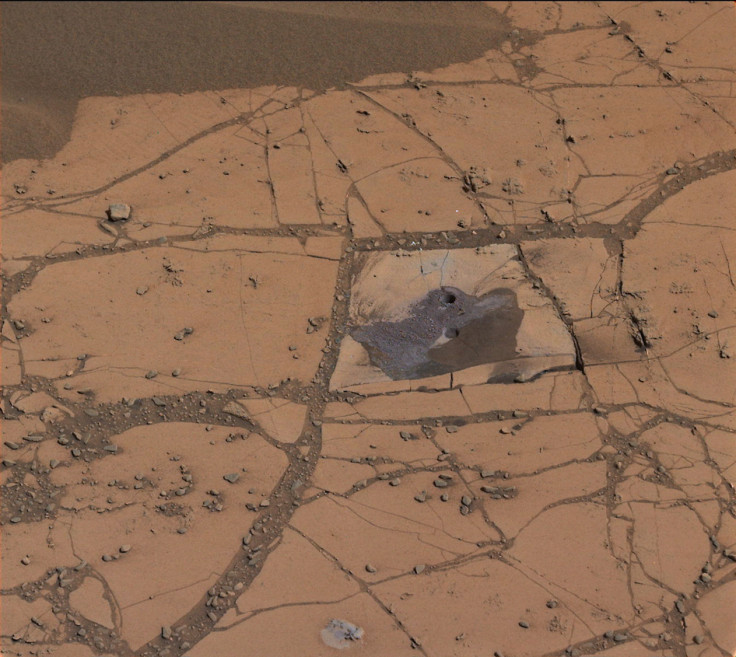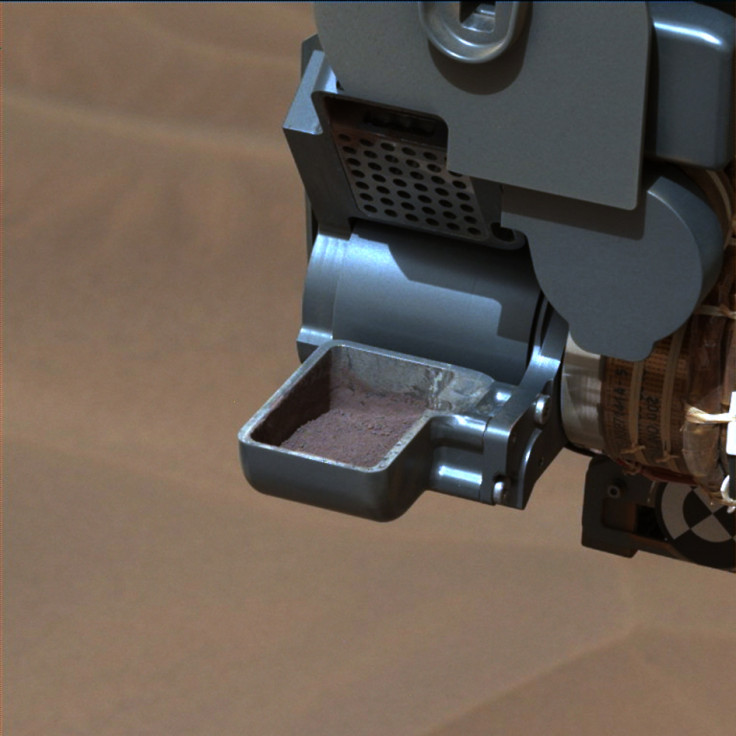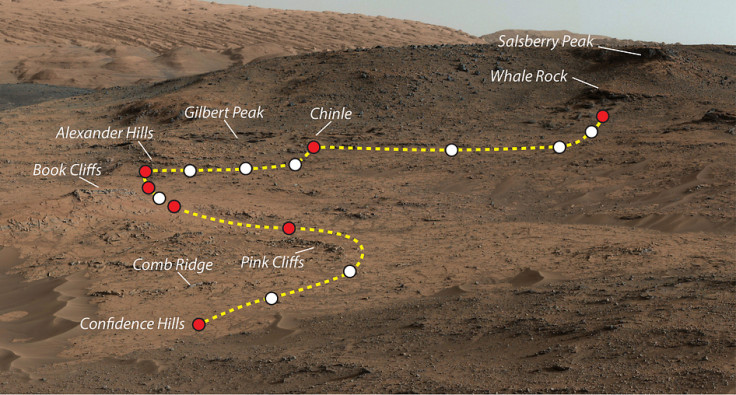Nasa's Curiosity Mars Rover Uncovers Minerals Strengthening Case for Ancient Presence of Water

Nasa's Curiosity rover has uncovered a selection of iron-oxide minerals from within a Martian mountain, marking the mission's first confirmation of minerals mapped from orbit.
The reddish rock powder was collected by drilling into a rocky outcrop, known as Confidence Hills, at the base of Mount Sharp, and scientists are hoping to use it to test a number of hypotheses they have.

"This connects us with the mineral identifications from orbit, which can now help guide our investigations as we climb the slope and test hypotheses derived from the orbital mapping," said Curiosity project scientist John Grotzinger, of the California Institute of Technology.
The small sample taken was found by scientists to only be partially oxidised, but still containing more hematite - a valuable iron-oxide mineral which typically forms in areas where there has been a long presence of water - than any previous rock or soil sample collected in the mission's two year period.
One way of forming hematite is by exposing magnetite, a magnetic iron-oxide mineral, to oxidising conditions. The sample contains a preservation of magnetite and olivine, which indicates a gradient of oxidation levels and could have provided a chemical energy source for microorganisms, ie life on Mars.
Previous findings from earlier in the mission uncovered an ancient lakebed in the Gale Crater, which held evidence of wet environmental conditions from billions of years ago, and another possibility of an energy source for microbial life.
It was for this reason that the Gale Crater was selected as a landing site and scientists have now reached the part of the crater where they are collecting the mineralogical evidence they set out to find.

"We've reached the part of the crater where we have the mineralogical information that was important in selection of Gale Crater as the landing site," said Ralph Milliken of Brown University, and a member of Curiosity's science team.
"We're now on a path where the orbital data can help us predict what minerals we'll find and make good choices about where to drill. Analyses like these will help us place rover-scale observations into the broader geologic history of Gale that we see from orbital data."
Scientist believe that other layers of the rocky outcrop contain different levels of hematite and other minerals. The Curiosity is now surveying the area to assess for more possible targets for investigation and drilling.
© Copyright IBTimes 2025. All rights reserved.





















